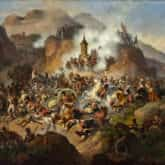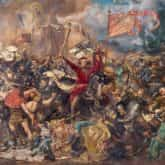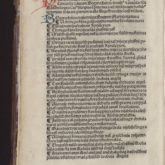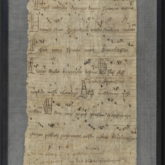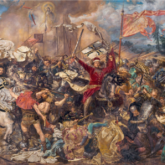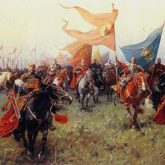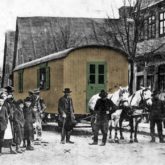„Bogurodzica” (Mother of God) – the oldest Polish religious song and the oldest Polish poetic text. It was written in the 12th or 13th century. Its text is a prayer to the Blessed Virgin Mary and to Christ. The first preserved text of “Bogurodzica” comes from 1407, from the collection of homilies by Maciej of Grochów (a curate from Kcynia in the Pałuki region). This date is not considered to be the moment of the song’s creation though. It served as the national anthem until the mid-16th century.
Mother of God
Music and lyrics: author unknown
Song description
Title: Mother of God
Music and lyrics: author unknown
Historical note
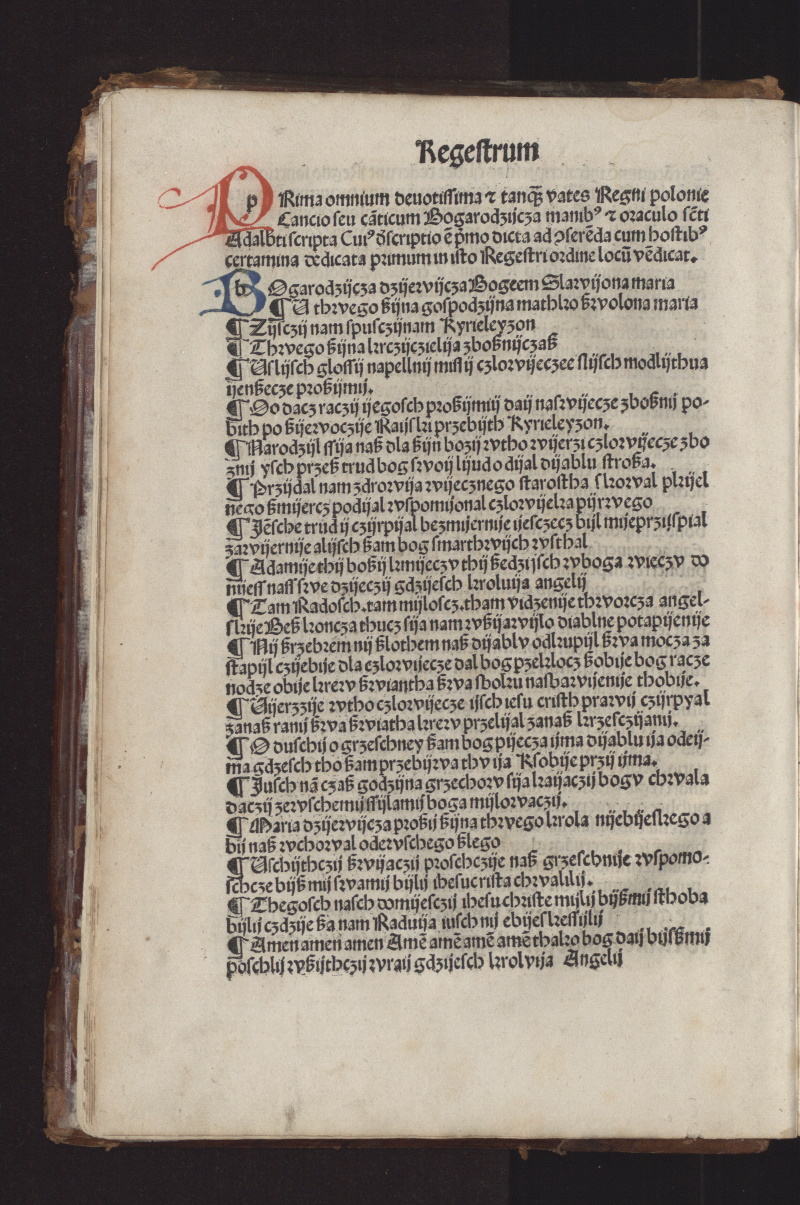
„Bogurodzica” was traditionally the song of the Polish knighthood. Among other occasions, it was sung before the victorious battles against the Teutonic Order (Teutonic Order) at Grunwald (1410) and at Wiłkomierz (on the river Święta) in 1435 and during royal coronations. Until the collapse of the Polish-Lithuanian Commonwealth at the end of the 18th century, Bogurodzica had the status of a „national song”, or de facto state anthem. The popularity of „Bogurodzica” and the respect which the song has commanded over the centuries are testimony to the great importance of the cult of the Virgin Mary in Polish Catholicism. This cult had a very strong influence on the unique, by European standards, respect for women in Polish culture.
The text of “Bogurodzica” was written in an intonation and sentence verse. It is a poetically refined prayer to Mary and Christ, along with an appeal to John the Baptist. Such a tripartite approach is a repetition of the “Deesis” motif, often found in Christian (especially Eastern) iconography. Its Polish example is a painting from 1161, preserved in the church in Tum near Łęczyca, considered a hypothetical inspiration for the author of “Bogurodzica”. The melody was borrowed directly from a knightly love song known in the West, written down and brought to Poland by the Benedictines. Contemporary artists, including Andrzej Panufnik, Wojciech Kilar and Krzysztof Meyer, also often referred to “Bogurodzica”. In one of the scenes of the film Pierścionek z orłem w koronie (The Crowned-Eagle Ring), Andrzej Wajda referred to it as “the song of Polish knighthood”. The singing of “Bogurodzica” before the Battle of Grunwald was presented by Aleksander Ford in the film Krzyżacy (Knights of the Teutonic Order).
History of Its Creation
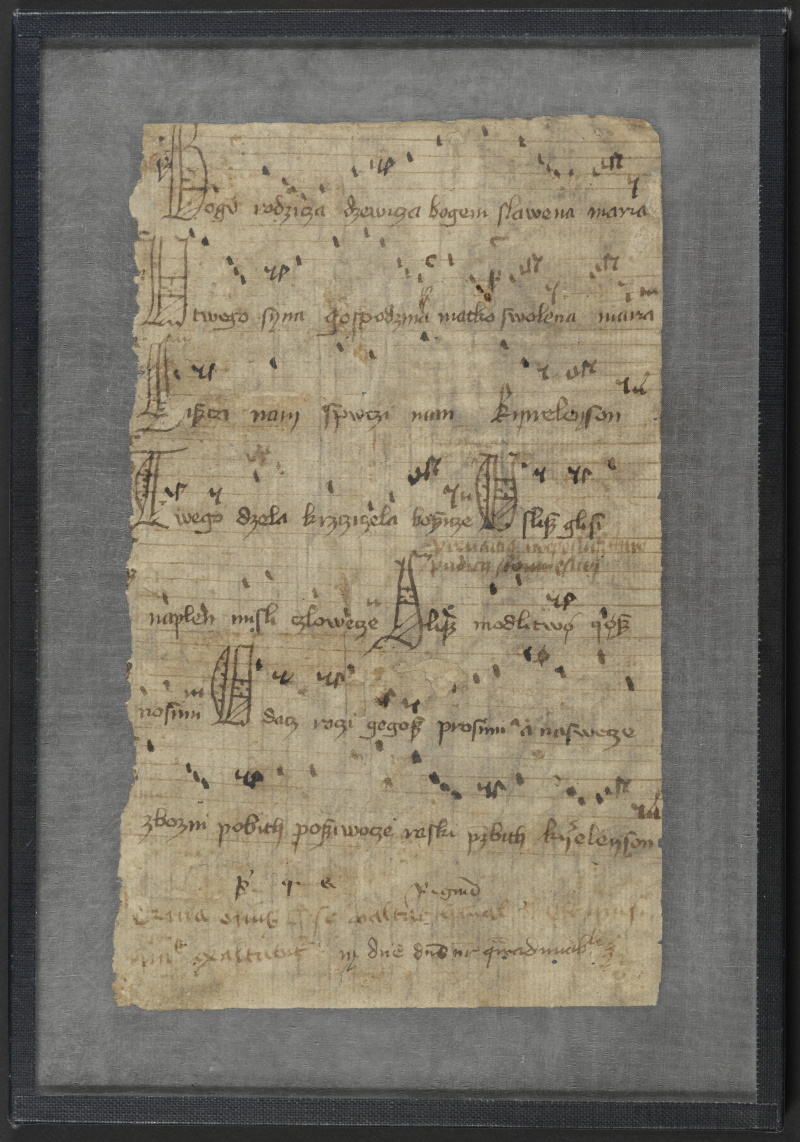
Some historians believe that the original text comes from the Cyrillo-Methodian (Byzantine-Slavic) tradition. The legend of St. Wojciech’s authorship, according to the author of this survey, is not based on any sources. In his 1937 monograph, Józef Binkermayer points to a possible inspiration from Benedictine songs. Perhaps “Bogurodzica” was written in the Płock monastery of this order, which, at the hypothetical time of its creation (12th–13th century) was already a thriving literary center, also using the Polish language in liturgical songs. The first preserved text of “Bogurodzica” comes from 1407, from the collection of homilies by Maciej of Grochów (a curate from Kcynia in the Pałuki region). However, we do not recognize this date as the moment of the song’s writing.
“Song of Polish Knighthood”
By the mid-14th century at the latest, “Bogurodzica” became a knight’s song and the de facto national anthem, sung before important battles. The first mention of this comes from Jan Długosz’s description of the Battle of Grunwald: “When the reveilles began to sound, the entire royal army, with a resounding voice, sang their native song: ‘Bogurodzica’, and then, raising their lances, they rushed into battle.” Describing “Bogurodzica” as a “native (national) song” (implicitly – with a long tradition) indicates that it must have become popularized in the knighthood for at least several generations. On the other hand, in the description of the battle with the Teutonic Knights at Dąbki (1431), Długosz noted: “And after singing the native song ‘Bogurodzica’… peasants with knights…” This suggests the great popularity of this song and its widespread recognition as a “battle song”. Another description also comes from Długosz, of the Battle of Wiłkomierz (1435): “The Polish knighthood, in the custom of their ancestors, thundered the song ‘Bogurodzica’, and after singing a few verses, engaged the enemy…” Długosz also mentions the coronation of Władysław III (Ladislaus of Varna), which took place in Latin and only “Bogurodzica” was sung in Polish. The custom of singing “Bogurodzica” before a battle temporarily disappeared during the Reformation, but it returned with the reign of Sigismund III Vasa.
Compiled by Piotr Pacak
 Strona dostępna w języku polskim
Strona dostępna w języku polskim  Website disponível em português
Website disponível em português 